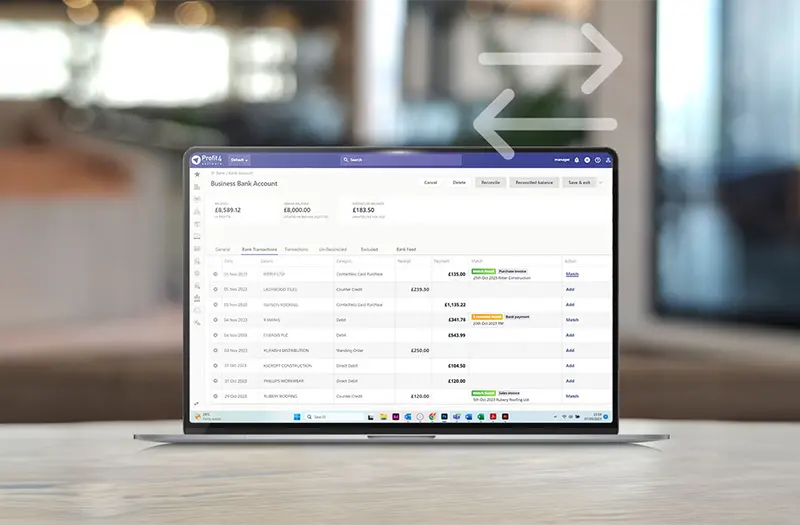
From raising purchase orders to sending shipping notifications, wholesale businesses rely on countless moving parts. When these tasks are handled manually, efficiency is significantly impacted.
Data is re-keyed, spreadsheets proliferate, and orders queue up while staff chase stock or copy-and-paste information between systems. The solution? Workflow automation.
It replaces repetitive routines with rules-driven processes that run quietly in the background, freeing people up to focus on value-adding work such as product sourcing, supplier negotiations, increasing sales and delivering exceptional customer service.
Yet many businesses are still hesitant to begin, worried that automation will be expensive, disruptive or complicated to manage. In reality, modern ERP platforms have made the transition simpler than ever.
In the following article, we explore where automation could benefit your business, the prerequisites for success and the early wins that will convince your staff and stakeholders alike.
Replace manual data entry with system-to-system updates
Every time a product code or quantity is typed by hand, the risk of error creeps in. An integrated ERP system removes that risk by allowing data to flow automatically between purchasing, sales, inventory and accounts.
For example, a sales order entered on a trade counter or eCommerce site can instantly reserve stock, update availability online and create a picking note in the warehouse. When the order is dispatched, the same system can raise the invoice and post the transaction to the ledger – without anyone re-entering the details.
Beyond saving time, this tight integration delivers real-time visibility: managers see what has sold, what remains in stock and what needs replenishing, all on a single dashboard. It also means customers get accurate information first time, reducing queries and returns.
Trigger purchasing decisions automatically
Stockouts damage reputation; overstock drains cash. Workflow automation solves both problems by monitoring on-hand quantities and supplier lead times, then generating purchase orders the moment thresholds are reached.
Modern ERP platforms let authorised users set rules by product, supplier or season. Fast-moving lines can be replenished when they fall below a certain level, while slow sellers may be ordered monthly or consolidated with other items to hit carriage-paid thresholds.
Crucially, automated purchasing is flexible. Buying teams retain final approval and can adjust quantities before the order is sent. Over time, data from sales trends and supplier performance refines the rules, making the process smarter with minimal intervention.
Streamline goods-in and put-away
When deliveries arrive, paperwork and double-handling slow everything down. With barcode scanning linked to the ERP, operators can book stock in by simply scanning the supplier’s label or an in-house SKU.
As a result, quantities update instantly, discrepancies are flagged for investigation and the system suggests optimal bin locations using warehouse optimisation tools. Not only will this save you time, but it will also improve the accuracy of stock levels and reduce the risk of items being shelved incorrectly.
Automate customer communications
Customers expect timely updates: order confirmations, dispatch notices and tracking links. Generating these manually is repetitive and error-prone.
Automated workflows allow the ERP to email or text confirmations as soon as key milestones are reached. If part of an order is on back-order, the customer is notified automatically, reducing inbound calls and building trust.
Because messages pull data directly from the ERP, they always contain the latest information – no need for your staff to collate spreadsheets or copy information from carriers’ portals.

Automate credit control and invoicing
Cash flow is the lifeblood of any wholesale business, but chasing payments is often neglected when admin teams are stretched. Automation solves this by generating invoices instantly when goods are dispatched, then scheduling reminder emails or letters based on agreed credit terms.
For example, if an invoice is unpaid after 30 days, the system can automatically send a polite reminder. At 45 days, a firmer notice might be issued. If a customer has multiple overdue invoices, the ERP system can flag this to the credit control team or even place a temporary hold on future orders.
This approach speeds up collections, reduces bad debt and prevents outstanding balances from slipping through the cracks – without adding to the team’s workload.
Build smart returns workflows
Returns are a reality in wholesale. Whether it’s damaged stock, incorrect items or buyer error, processing them efficiently keeps customers happy and protects margins.
With workflow automation, the moment a return is logged – online, by phone or via a trade portal – the ERP system can issue a returns authorisation, notify the warehouse and generate labels and documentation.
Once the goods are received and checked, the system can automate the next step: issuing a credit note, arranging a replacement, or escalating to the customer service team if needed. This structured approach shortens turnaround times, provides an audit trail, and helps businesses identify recurring issues (such as certain products or customers with higher return rates).
Improve decision-making with real-time reporting
Many wholesalers operate in reactive mode – not through poor management, but because their systems don’t provide the right information quickly enough. With automated reporting built into an ERP system, managers can set up dashboards that update live and deliver regular insights directly to their inbox.
Want to know which SKUs are trending, which suppliers are missing delivery deadlines or how current margins compare to last quarter? With automation, the data is ready when you are – no more waiting on spreadsheets or asking team members to compile figures manually.
These insights are crucial when scaling, enabling better stock planning, smarter customer targeting and faster resolution of operational problems.
Getting started with workflow automation
One of the biggest misconceptions about workflow automation is that it has to happen all at once. In reality, the best approach is usually incremental, identifying the most time-consuming or error-prone processes and automating them first.
Here’s a simple roadmap to help get started:
Map your current workflows
Before you can improve a process, you need to understand it. Take time to document how tasks are currently carried out – who does what, in what order and with which systems. This will help identify bottlenecks, duplication and risks.
Identify priority areas
Look for ‘quick wins’ – areas where automation would save the most time or reduce the most errors. Common candidates include order processing, stock updates and invoice generation.
Choose the right ERP system
Not all ERP systems are created equal. Look for one specially built for wholesalers, with integrated modules for stock control, order management, CRM and finance. Ideally, it should also include automation tools that are easy to configure – without the need for coding or expensive customisation.
Profit4 is a great example. Designed specifically for wholesale businesses, it combines powerful automation features with intuitive interfaces that staff can learn quickly.
From automated replenishment and dispatch routines to customer notifications and real-time reporting, Profit4 gives businesses the tools to streamline operations and scale with confidence.
Train and support your team
Automation doesn’t remove the human element – it enhances it. That’s why change management is key. Involve your team early, explain the benefits and provide hands-on training to build confidence. Make sure they understand how the automated workflows support their goals – not just management’s.
Monitor and improve
Once workflows are up and running, continue to review and refine them. Are they saving time? Are there edge cases they don’t cover? Regular feedback loops will help improve performance and guarantee the system evolves with your business.
Ready to take the next step?
If you’re still relying on manual admin, spreadsheets and disconnected systems, now is the time to modernise. Automation is no longer just about saving time – it’s about unlocking growth.
Profit4 by OGL Software has been designed to help UK wholesalers automate and scale. From smart warehouse optimisation tools to real-time reporting and seamless eCommerce integration, it provides everything you need to streamline workflows and stay competitive in 2025 and beyond.
Want to see how it works? Watch our 3-minute demo to see Profit4 in action and discover how workflow automation can transform your business.


